Venus Cloacina: Roman Goddess Of Sewers And Drains
A. Sutherland - AncientPages.com - During the long course of their Empire (650 BC – 400 AD), the Romans worshiped many deities. They had gods everywhere and for almost every possible situation and action.
Cloacina - A goddess who presided over the sewer system in ancient Rome and drained the city's waste.
In Roman mythology, Cloacina was a goddess who presided over the sewer system in ancient Rome and drained the city's waste.
She was responsible for the system's smooth operation and patronized the workers who served the sewer. In a city as large as Rome, sewer problems were considered big trouble.
In ancient Rome, considerable importance was attached to Cloacina, identified with Venus. A coin was minted in honor of Cloacina, whose statue still exists in Rome. Besides, a small, round stone sanctuary was dedicated to the goddess.
Ancient Rome, nicknamed the 'Eternal City,' was a large city. Entertainment and foods were essential. However, a properly functioning sewage system played a crucial role, too.
In Roman mythology, we usually associate the goddess Venus with love, desire, sex, fertility, prosperity, and victory. Like other major Roman deities, Venus had several epithets that referred to her different cult aspects.
 Above: L. Mussidius Longus. 42 BC. AR Denarius (17mm, 4.04 g, 1h). Rome mint. Concordia's veiled, diademed bust. Below: Two statues of Venus Cloacina on a platform with balustrade of the Venus Cloacina's shrine. Crawford 494/42b; CRI 188a; Sydenham 1093a; Mussidia. source
Above: L. Mussidius Longus. 42 BC. AR Denarius (17mm, 4.04 g, 1h). Rome mint. Concordia's veiled, diademed bust. Below: Two statues of Venus Cloacina on a platform with balustrade of the Venus Cloacina's shrine. Crawford 494/42b; CRI 188a; Sydenham 1093a; Mussidia. source
One of these epithets was Venus Cloacina ("Venus the Purifier"), a combination of Venus with Cloacina, a water goddess that likely originated in Etruscan mythology. The Romans adopted her to their pantheon that, apart from well-known mythological figures, included innumerable lesser gods.
Originally, Cloacina ('cloaca') in Latin means 'sewer' or 'drain.' This goddess took care of the efficiency of sanitary facilities, prevented a repeat of a severe city flood, and looked after Roman sewers.
She drained the Forum and its environments and had responsibility for the famous Roman Cloaca Maxima (the Great Sewer), the main underground channel, one of the oldest existing monuments of Roman engineering, that was removing the waste from the city.
 The Sacrum Cloacina as it appeared in August 2012. Image credit: Brian Ahola - CC BY-SA 4.0
The Sacrum Cloacina as it appeared in August 2012. Image credit: Brian Ahola - CC BY-SA 4.0
The Cloaca Maxima was originally built as an open sewer and canal by the Etruscans probably around 600 BC. By the time of the great Roman Empire, the Cloaca Maxima was covered and paved over. Thus it became a main feature of the sewer systems that made the Romans famous.
As Dionysius of Halicarnassus, a Greek historian and teacher of rhetoric, who flourished during the reign of Emperor Augustus, once said:
“The extraordinary greatness of the Roman Empire manifests itself above all in three things: the aqueducts, the paved roads, and the construction of the drains.”
When the sewer pipes were accidentally clogged or discharged sewage, the inhabitants of Rome asked Cloacina for help and often raised prayers for her. Usually, people wanted a job done as soon as possible, so they did not wait for the goddess's intervention. They repaired the damage by themselves.
Outlet of the Cloaca Maxima in the Tiber, seen from the Palatino Bridge. It was built under Tarquin The Proud (7th-6th century BC), and was originally located between Capitoline Hill and Palatine Hill. Image credit: Chris 73 - CC BY-SA 4.0
Just above the outfall of the Cloaca Maxima, the goddess had an ancient shrine decorated with a statue of Venus. Thus, Cloacina was simultaneously the deity of sewage and the goddess of beauty.
Pliny the Elder (23 -79 CE), a Roman naturalist, natural philosopher, and author of the famous 'Natural History,' made his comments on Rome's sewage system, saying that "sometimes water from the Tiber flows backward and makes its way up the sewers. Then the powerful flood-waters clash head-on in the confined space, but the unyielding structure holds firm."
However, Pliny could not explain why the Romans combined a goddess of sewers with a goddess of love, beauty, pleasure, and purity.
By combining Venus with Cloacina, perhaps the ancient Romans wanted to say how essential and honored Cloacina was, the patroness of the drainage system that made the existence of Forum possible. The Forum served as a public area with commercial, religious, economic, political, legal, and social activities.
Written by – A. Sutherland - AncientPages.com Senior Staff Writer
Updated on March 30, 2024
Copyright © AncientPages.com All rights reserved. This material may not be published, broadcast, rewritten or redistributed in whole or part without the express written permission of AncientPages.com
Expand for referencesReferences:
The History of Sanitary Sewers
Agnoletti M., Serneri S. N. The Basic Environmental History
Stewart Perowne, Roman Mythology
More From Ancient Pages
-
 Stones Of Rajajil – Sophisticated Road Markers Or An Ancient Astronomical Observatory?
Civilizations | May 21, 2017
Stones Of Rajajil – Sophisticated Road Markers Or An Ancient Astronomical Observatory?
Civilizations | May 21, 2017 -
 Enigmatic Denisovans Interbred With Modern Humans More Than Once
Archaeology | Mar 22, 2018
Enigmatic Denisovans Interbred With Modern Humans More Than Once
Archaeology | Mar 22, 2018 -
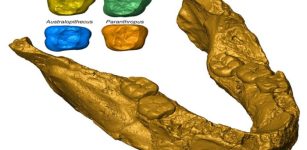 Fossil Tooth Analysis Sheds More Light On Earliest Humans From Southern Africa
Archaeology | Jul 15, 2022
Fossil Tooth Analysis Sheds More Light On Earliest Humans From Southern Africa
Archaeology | Jul 15, 2022 -
 Ancient Alaskans Were Freshwater Fishers – Earliest Evidence Found
Archaeology | Jun 19, 2023
Ancient Alaskans Were Freshwater Fishers – Earliest Evidence Found
Archaeology | Jun 19, 2023 -
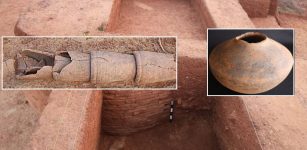 2,000-Year-Old Trade Center: Brick Structure, A Vishnu Sculpture Among Findings In Andhra Pradesh
Archaeology | Nov 6, 2019
2,000-Year-Old Trade Center: Brick Structure, A Vishnu Sculpture Among Findings In Andhra Pradesh
Archaeology | Nov 6, 2019 -
 Elizabeth Woodville: Mother Of The Princes In The Tower And Commoner Queen
Featured Stories | Jul 16, 2018
Elizabeth Woodville: Mother Of The Princes In The Tower And Commoner Queen
Featured Stories | Jul 16, 2018 -
 Sacred Healing Earth Of Chimayo And The Mysterious Black Christ Crucifix
Featured Stories | May 24, 2019
Sacred Healing Earth Of Chimayo And The Mysterious Black Christ Crucifix
Featured Stories | May 24, 2019 -
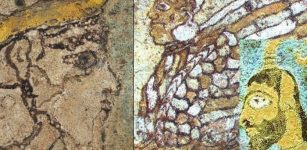 2,000-Year-Old Smuggled Glazed Bricks Sent Back To Iran By Switzerland
Artifacts | Dec 29, 2020
2,000-Year-Old Smuggled Glazed Bricks Sent Back To Iran By Switzerland
Artifacts | Dec 29, 2020 -
 London’s Underground Rivers Were Deliberately Hidden
Featured Stories | Oct 8, 2018
London’s Underground Rivers Were Deliberately Hidden
Featured Stories | Oct 8, 2018 -
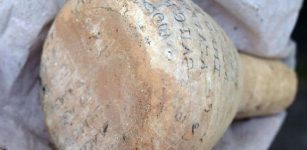 Inscription Found In Ancient Thracian Tomb in Bulgaria’s Tatarevo Is A Verse from Solon’s ‘Prayer to the Muses’
News | Sep 29, 2015
Inscription Found In Ancient Thracian Tomb in Bulgaria’s Tatarevo Is A Verse from Solon’s ‘Prayer to the Muses’
News | Sep 29, 2015 -
 Riddle Of Brazilian Atlantis – Strange Discovered Rocks The World Forgot About
Featured Stories | Jan 28, 2022
Riddle Of Brazilian Atlantis – Strange Discovered Rocks The World Forgot About
Featured Stories | Jan 28, 2022 -
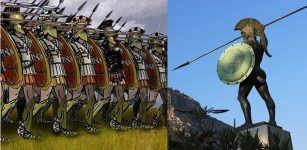 Sparta And Legendary King Leonidas: The Heroes Of Thermopylae
Featured Stories | Jul 18, 2018
Sparta And Legendary King Leonidas: The Heroes Of Thermopylae
Featured Stories | Jul 18, 2018 -
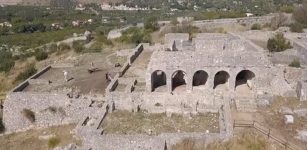 Was Beautiful Ancient City Of Terracina Home To The First Hellenistic Temple?
Archaeology | Dec 16, 2019
Was Beautiful Ancient City Of Terracina Home To The First Hellenistic Temple?
Archaeology | Dec 16, 2019 -
 Unexplained Case Of Ancient Authors Who Foretold One Of the World’s Greatest Catastrophes
Ancient Mysteries | Oct 13, 2018
Unexplained Case Of Ancient Authors Who Foretold One Of the World’s Greatest Catastrophes
Ancient Mysteries | Oct 13, 2018 -
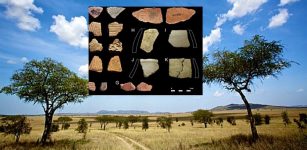 Evidence For Milk, Meat, And Plants In Prehistoric Kenya And Tanzania
Archaeology | Apr 15, 2020
Evidence For Milk, Meat, And Plants In Prehistoric Kenya And Tanzania
Archaeology | Apr 15, 2020 -
 Horrifying Flying Head That Terrorized The Iroquois
Featured Stories | Sep 17, 2019
Horrifying Flying Head That Terrorized The Iroquois
Featured Stories | Sep 17, 2019 -
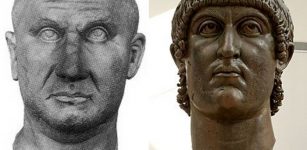 On This Day In History: Battle Of Cibalae Was Fought Between Two Roman Emperors – On Oct 8, 314
News | Oct 8, 2016
On This Day In History: Battle Of Cibalae Was Fought Between Two Roman Emperors – On Oct 8, 314
News | Oct 8, 2016 -
 Death Of Kvasir And How Famous Mead Of Poetry Was Created, Stolen And Finally Recovered By Odin
Featured Stories | Apr 14, 2018
Death Of Kvasir And How Famous Mead Of Poetry Was Created, Stolen And Finally Recovered By Odin
Featured Stories | Apr 14, 2018 -
 Mesoamerican Rubber Ball Game Tradition Existed Earlier Than Thought
Ancient Traditions And Customs | Mar 17, 2020
Mesoamerican Rubber Ball Game Tradition Existed Earlier Than Thought
Ancient Traditions And Customs | Mar 17, 2020 -
 ‘The Domesday Book’ Of William I The Conqueror: Detailed Register Of ‘Who Owned What’ In England
Ancient History Facts | Jan 11, 2017
‘The Domesday Book’ Of William I The Conqueror: Detailed Register Of ‘Who Owned What’ In England
Ancient History Facts | Jan 11, 2017


